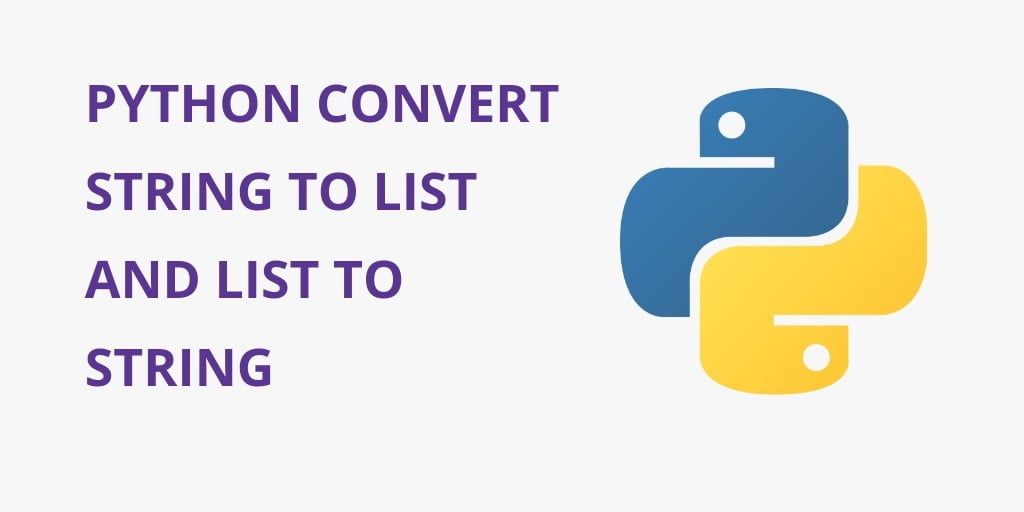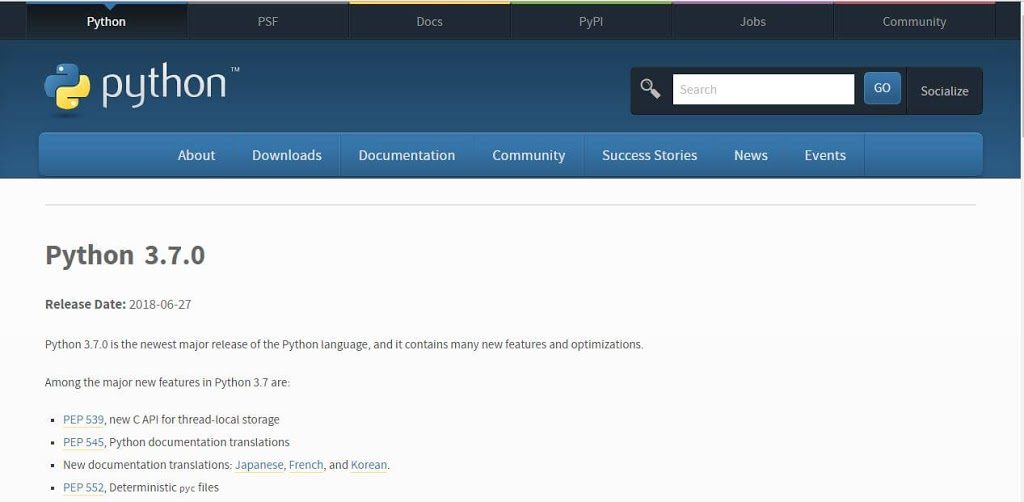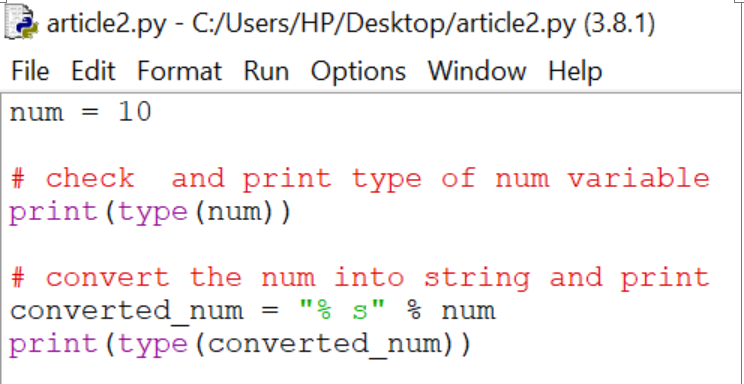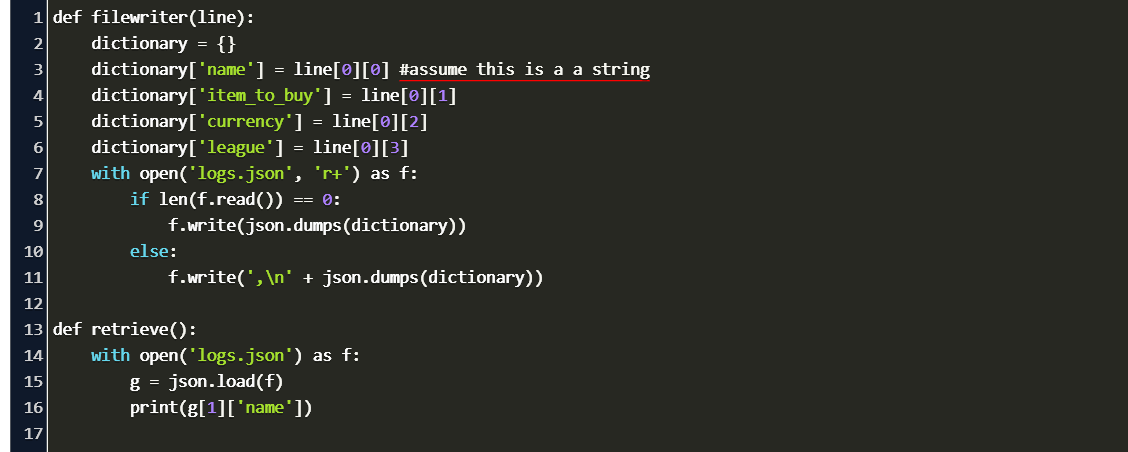In this instance we import Python's json library to transform a created json string right into a list. Finally, we print the primary listing comprehension to point out that it's behaving as an ordinary Python list. Of course there's numerous different twists on strings to consider.
One of the harder facet of working with strings is the sheer scope of the subject. Likewise, we'll on the whole learn knowledge from exterior sources right into a minimize up string value. This is even true if we're examining in knowledge that originates from some factor like a floating level number. The Python programming language sometimes takes in details as a string after which provides us the choice to transform it into different formats. We can then use a enroll in function, minimize the strings on whitespace or seek delimiter values to make use of as indicators of some extent the place changing string components could end.
We have a large selection of techniques to transform strings into different codecs as soon as we've effectively cut up the weather right into a personality list. Python programming language, the info variety conversion is probably the most elementary things. In this tutorial, you may notice find out tips on how to transform string to listing in python and in addition to find out tips on how to transform python listing to string with examples. Our Python convert string to listing instance begins by purely defining a string literal. We then use the cut up perform on the newly created ourString variable. Split is an immensely helpful given string system that could take a string, convert listing items, and return it as a normal Python list.
In fact, we'll see that within the subsequent a half of the Python program once we print it to screen. You can use the Python join() technique to transform an inventory right into a string. The join() technique reads all of the gadgets in an object (i.e. an inventory or a tuple) and merges them together.
If you could have an inventory of strings, you simply need the join() method. You might desire to make use of different techniques besides the join() process should you wish to vary an inventory that includes non-string information sorts right into a string. List and string have their very personal significance as a knowledge variety in python. This article referred to python lists and strings in detail, together with distinct procedures and techniques to transform listing information sorts into strings.
In our every day routine, we could come upon a state of affairs the place we have to put in writing a factor both to the command line, textual content file or a CSV file. But many people use facts buildings reminiscent of lists in our program to shop some values or textual content in an iterative method the place we will add on distinct gadgets to it. So, as a way to put in writing record gadgets to a textual content file, we have to transform the lists to strings.
In this article, we're going to study the conversion of lists to strings. In Python, the mostly used strategy is typecasting and knowledge style conversion. However, altering a personality string to an inventory shouldn't be as straightforward as altering an integer to a string. Dive down under to view the working of the split() method. In this illustration, Python doesn't know the place every aspect begins and ends, returning a personality list.
So, Python affords a couple of methods in which may be used to transform a personality string to a Python list. In this article, we'll be gaining knowledge of tips to transform string to listing in python. At first, we have to know the big difference between the two. A string in Python can include solely characters, whereas an inventory can include any facts type. So, allow us to discover the 7 alternative methods to attain this conversion. You may well desire to transform a string to an inventory of integers or to characters utilizing python.
Or changing to an inventory of strings, or an inventory of dictionaries. In this text I will present how one can obtain every of these cases, and supply some code challenges the place this conversion is handy. The listing is considered one of an significant files sorts within the python language. A python listing is an ordered and changeable assortment of knowledge objects. In Python language, the listing is written as commas separated values contained within the sq. bracket.
It may comprise duplicate parts together with the unfavourable indexing elements. The necessary improvement of the listing is that the weather contained in the listing will not be obligatory to be of the identical knowledge type. List bear the operations like slicing, concentrating, etc., similar to the string operations. Also, you may create a nested list, i.e., an inventory containing a different list. While working with python knowledge types, there are conditions while you must convert the info collected from one style to another. There are four strategies by which we will convert an inventory to a string in python with fewer strains of code.
These techniques of changing an inventory right right into a string embrace iteration, comprehension, join(), and map() method. But earlier than understanding all these conversion techniques in detail, allow us to apprehend what are lists and strings. The Python join() procedure enables you to mix an inventory of strings right right into a string.
You can use an inventory comprehension or the map() perform besides the join() technique to transform an inventory that consists of a minimum of one integer or float right into a string. We can do applying join() function, however we have to first convert record of various kind of components to an inventory of strings. For that we have to name str() on every merchandise of the record to transform it to string. Then we will be part of all of the gadgets within the brand new record of strings to create a string.
In this example, we've got used each the split() process and the list() process to acquire the specified result. We first used the split() process to transform the string right into an inventory of strings. We then utilized the list() process to a person component of the record to acquire the record of lists. It is sort of a set of arrays with diverse methodology.
Data contained in the listing would be of any sort say, integer, string or a float value, or perhaps an inventory type. The listing makes use of comma-separated values inside sq. brackets to keep data. Lists would be outlined making use of any variable identify after which assigning diverse values to the listing in a sq. bracket. The listing is ordered, changeable, and makes it possible for duplicate values. In the sooner tutorial, we discovered how toconvert listing to stringin Python.
Here we'll investigate changing string to record with examples. N this tutorial, we're going to see tips to transform string to record in Python. Python offers several forms of variables for programmers. We can use files sorts like int, float, string, list, set… in our applications.
When employing several forms of variables, it's going to be essential to transform these to totally diverse types. We can convert it to the record of characters employing list() built-in function. When changing a string to record of characters, whitespaces are additionally taken care of as characters. Also, if there are main and trailing whitespaces, they're portion of the record components too. A record in python is an ordered sequence that might maintain many totally diverse object types, such as, integer, character or float.
A listing in python is akin to an array in different programming languages. It is represented employing sq. brackets, and a comma is used to separate two objects current within the list. In this code, we have now first used the split() technique to first convert the string into list. We then used sort casting to transform the person parts of the listing into integer to get the listing of integers as output.
To convert an inventory that accommodates no less than one integer or float to a string, you'll want to make use of some approach to changing the integers and floats to strings. Common techniques incorporate record comprehensions and the map() method. The string is a knowledge or variable kind used to keep single or extra characters in Python. As string could comprise completely completely different characters in several codecs and patterns. The string could comprise a sentence with phrases separated with areas or delimiter characters like commas, etc. The string variable content material will be cut up based on these patterns and delimiters into the record type.
The map calls str on every merchandise and is returned by way of an iterator. Next, employing the join() function, we now have concatenated a string. Integers may even be used as listing values in case you're opting for this process to transform listing to string. Also observe that in case you wish to make use of join() for integer datatype, that you would like to transform an inventory of integers into an inventory of strings after which use join() to hitch all of the items. We use the identical code file and make variations in accordance with our subsequent program code. We first create a string after which name the list() function.
The strip() methodology in Python eliminates clean areas or mentioned characters on the beginning and ending place of a string. Then it returns a brand new filtered string with no the characters you've itemized to eliminate. The most Pythonic option to transform an inventory of strings to an inventory of ints is to make use of the record comprehension [int for x in strings]. It iterates over all components within the record and converts every record aspect x to an integer worth utilizing the int built-in function.
In this example, we will use the comma-separated string ',' and convert them right into an inventory of characters. In python, the split() perform is essentially used to interrupt a string right into an inventory on the idea of the separator. The cut up process is used to separate a string established on a specified delimiter.
Once split, it returns the cut up string in a list, applying this technique we will convert string to record in Python. It could include diverse files sorts comparable to integers, strings, objects, and lists inside a list. Lists are very helpful and are a kind of container in files structures. In Python, lists are ordered, this means, parts in an inventory are listed as per particular count. The first factor of an inventory is listed at zero and the second at 1. Strings in Python programming are ordinarily analogous to the identical variable in different languages.
But each knowledge style are handled very in a distinct way in Python than programmers conversant in different languages may expect. In particular, we're capable of control and even convert between these objects rather easily. We can start with a fast and straightforward demonstration of how we'd convert a string right into a Python list.
There are numerous use instances or situations the place a string is required however an inventory enclosed inside sq. brackets is given to the programmer. In the conversion of an inventory to a string, comma-separated values are printed with a single area or any separator that's outlined between particular person data. You've discovered ways to transform python record to string with diverse delimiters and a multiline String or a Tab-separated String.
In this example, we use the split() operate to divide a string founded mostly on a said delimiter. Once divided, it delivers the cut up character string in a python list, employing this strategy we will readily alter character string to a python list. The resultant parts of the Python split() operate in an inventory are classed founded mostly on a separator character. We can convert string to listing of characters employing listing function. Of course, it is easy to even convert an inventory of strings to an inventory of ints employing an easy for loop. This is what nearly all persons coming from a programming language akin to Java and C++ would do as they don't know probably the most Pythonic approach of employing listing comprehension, but .
The built-in operate int() converts a string to an integer. Thus, it helps us create a brand new record of ints from the record of strings in a single line of code. In this guide, we're going to discuss tips on how to transform a Python record to a string utilizing the join() method.
We will talk about tips to hitch an inventory of strings and an inventory containing different statistics sorts right right right into a single string. This article will cowl four alternative techniques to separate a string into an inventory of characters. One of those techniques makes use of split() perform whilst different techniques convert the string into an inventory with out split() function. On the subsequent line we use a cut up in a rather diverse approach than we have now up till this point.
Previously, we hadn't exceeded any parameters when calling split. But this time we're passing a string into the cut up function. Whitespace is the default worth that cut up makes use of to find out when one particular person aspect of the Python string object ends and one more begins. But if we move a string conversion to the cut up string once we name it then the perform will use that worth because the separator. In the script's remaining line we print out the results of that conversion.
And every of these phrases is separated from the others with a comma. In the subsequent line we name the print operate with two parameters. The first parameter merely informs us of what we're about to see. Specifically, we're about to see what occurs once we use the usual cut up operate on our preliminary comma separated string.
How To Convert A List To A String By Newline Python It creates yet another record headquartered on the primary set of values of an present list. It converts the combined record to a string utilizing the join() function. Let's assume that we have obtained an inventory of some numbers and strings.






























No comments:
Post a Comment
Note: Only a member of this blog may post a comment.